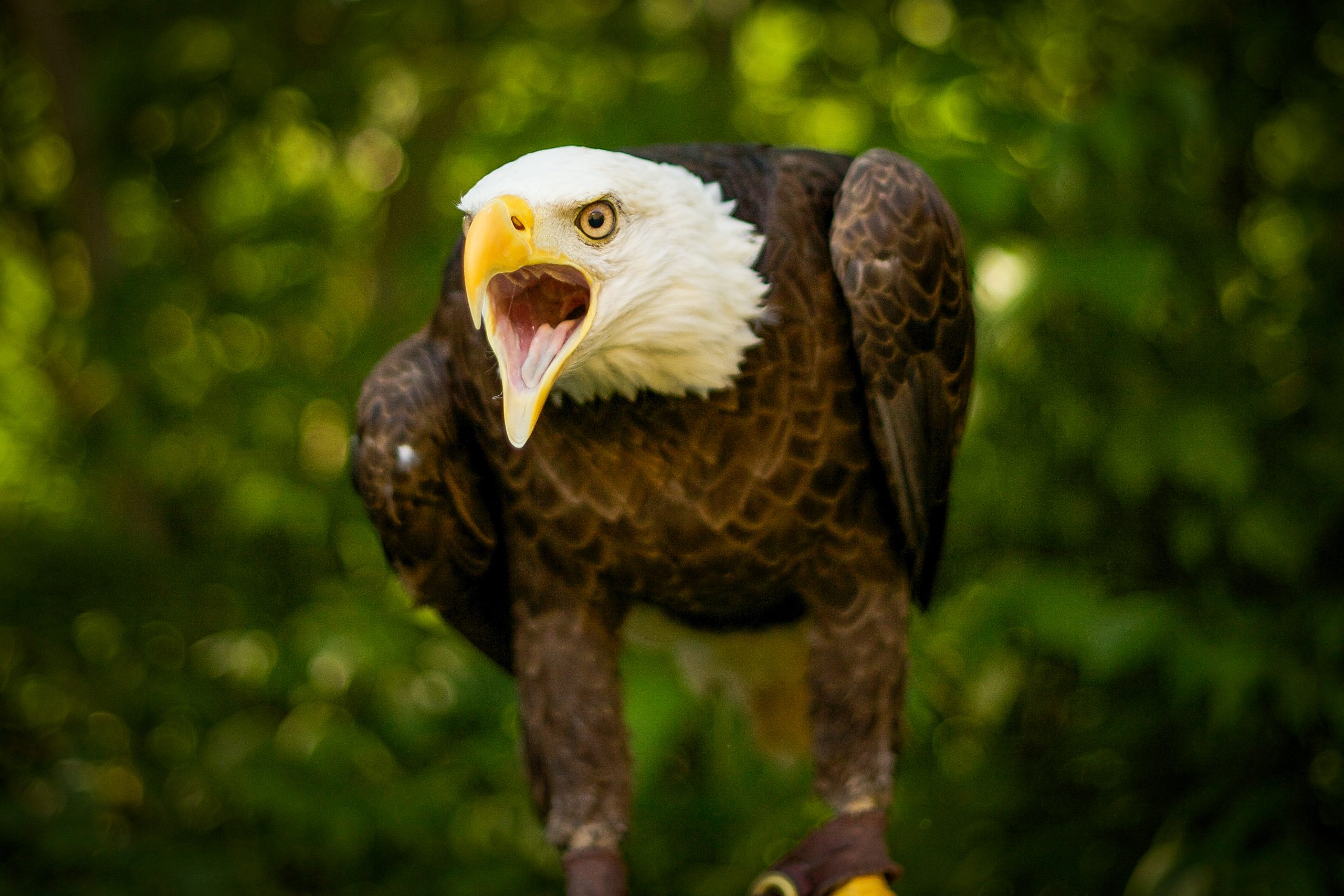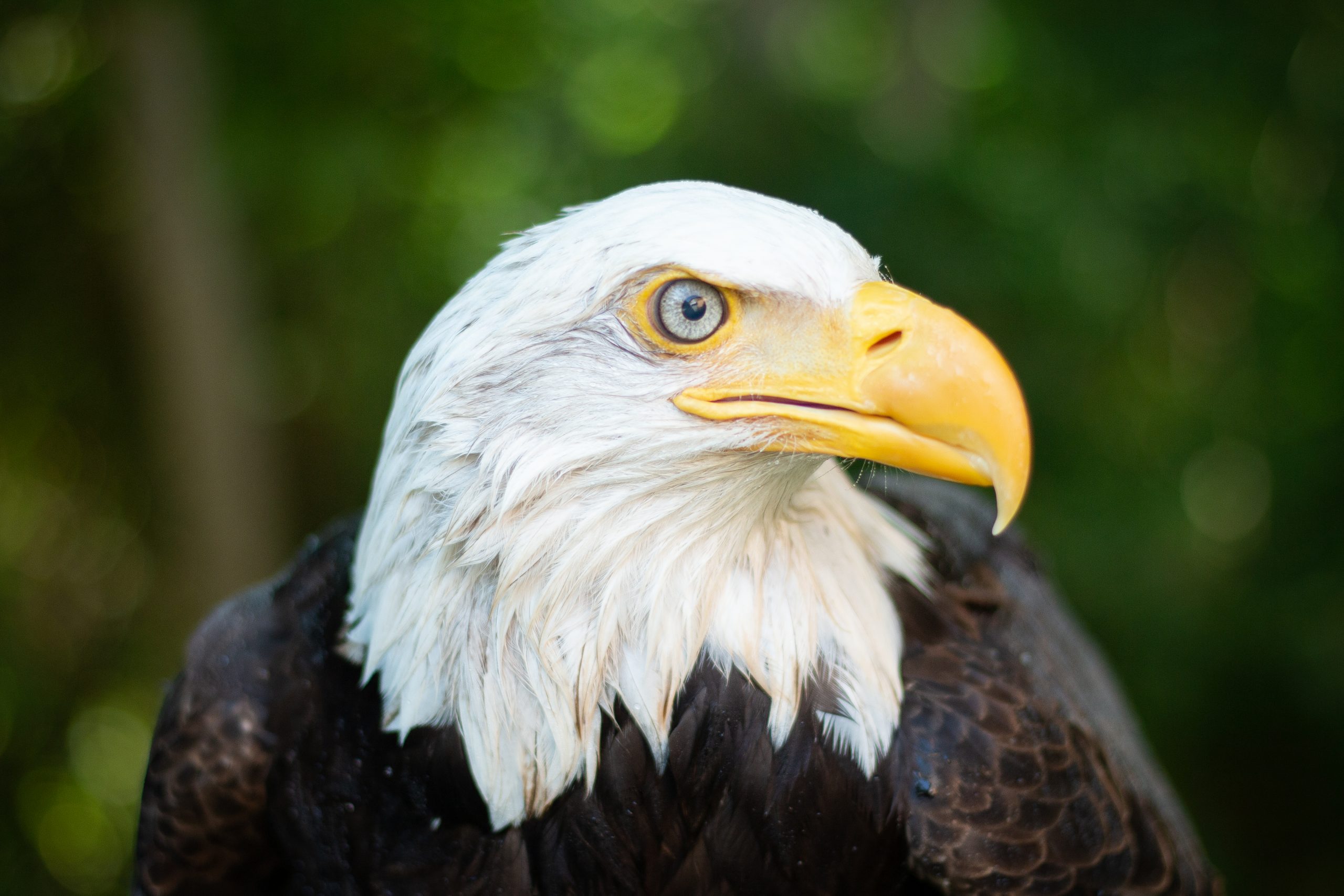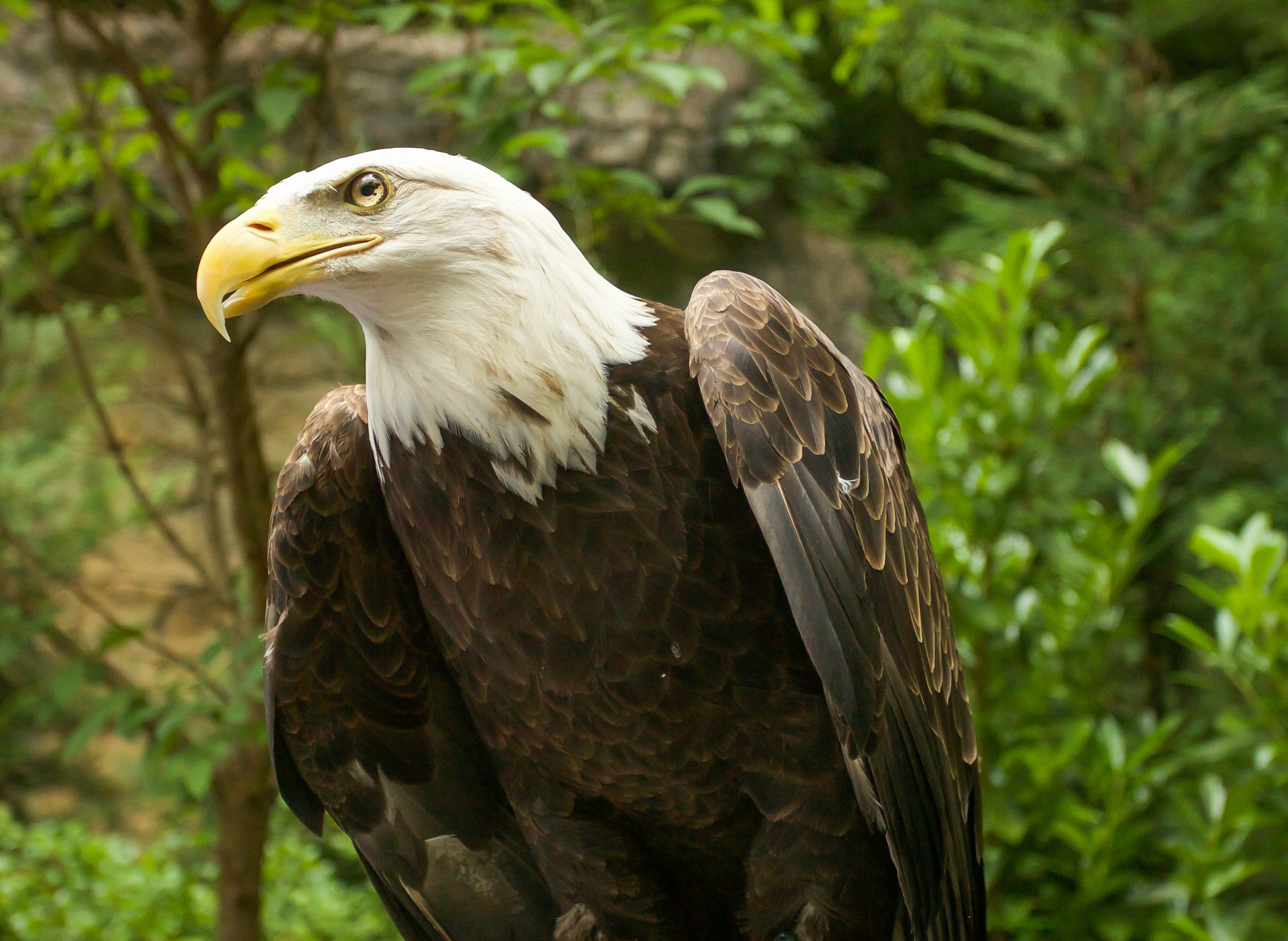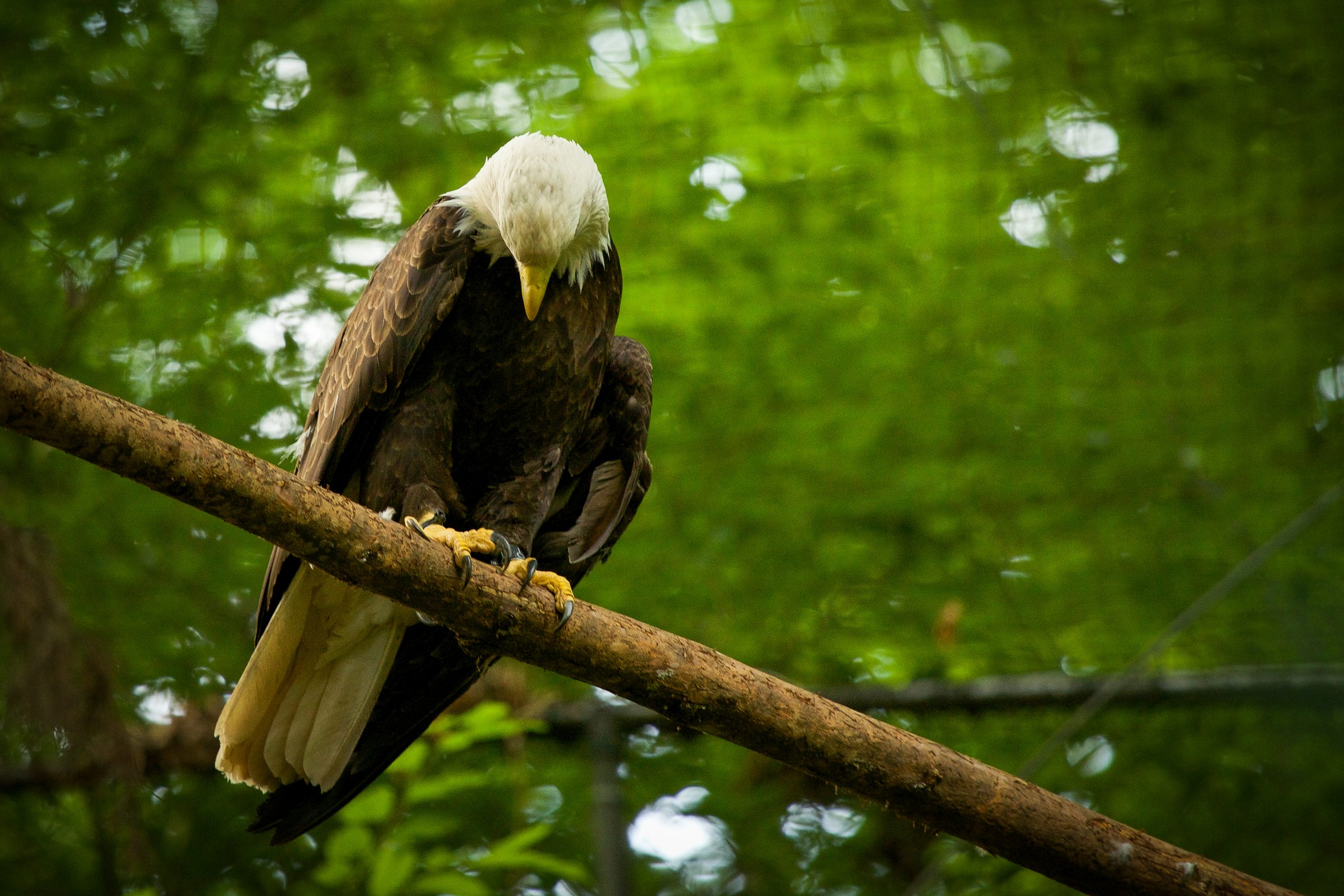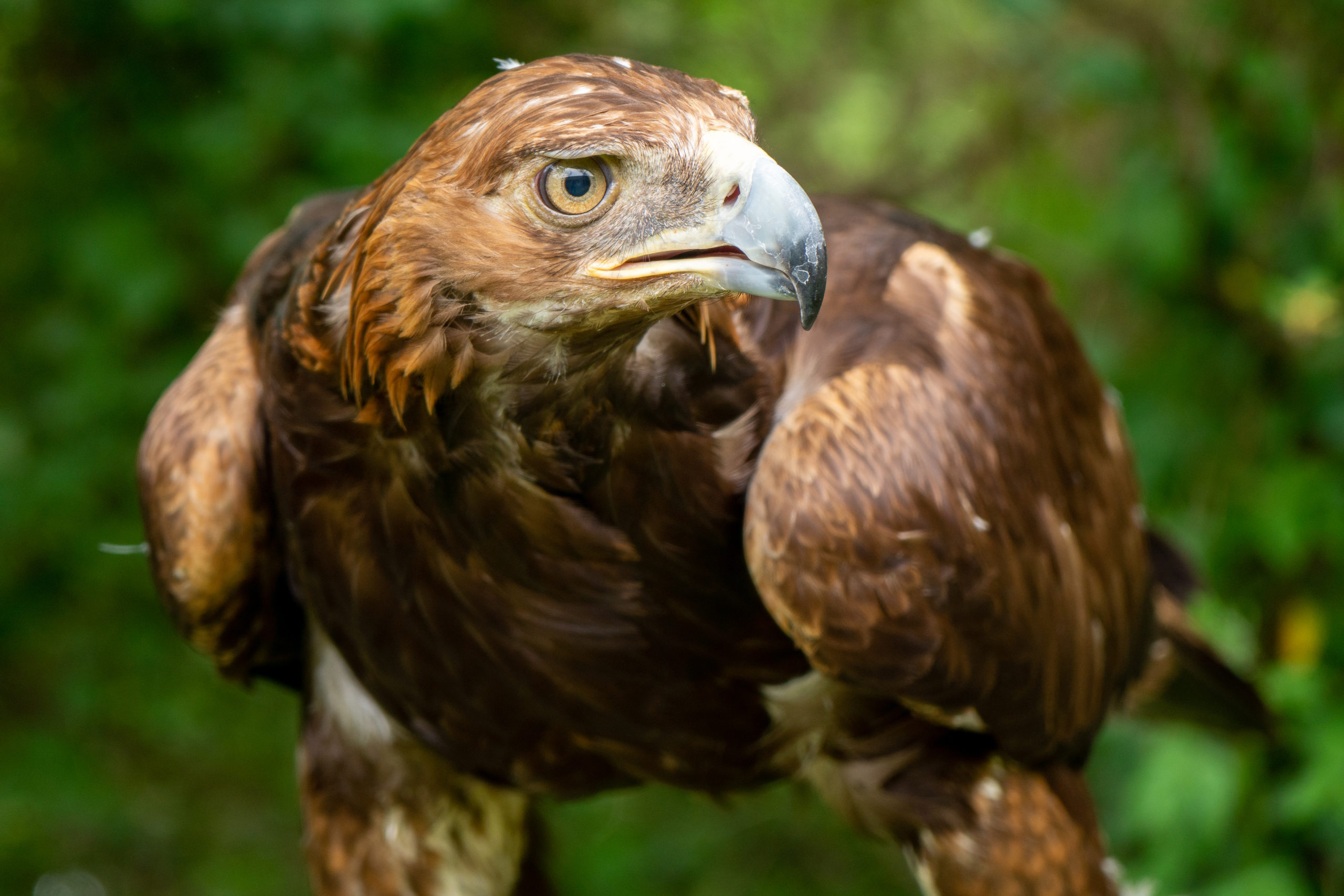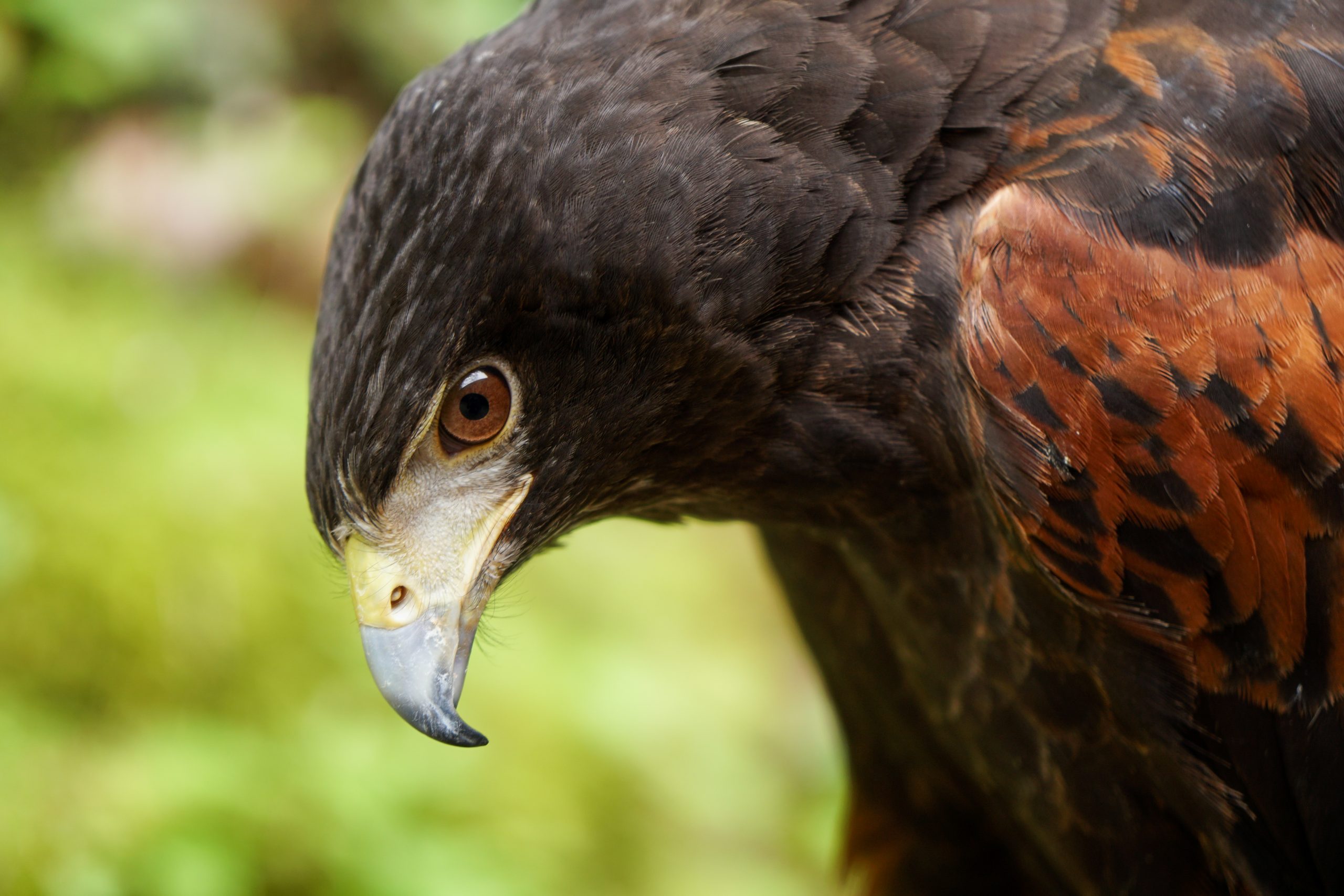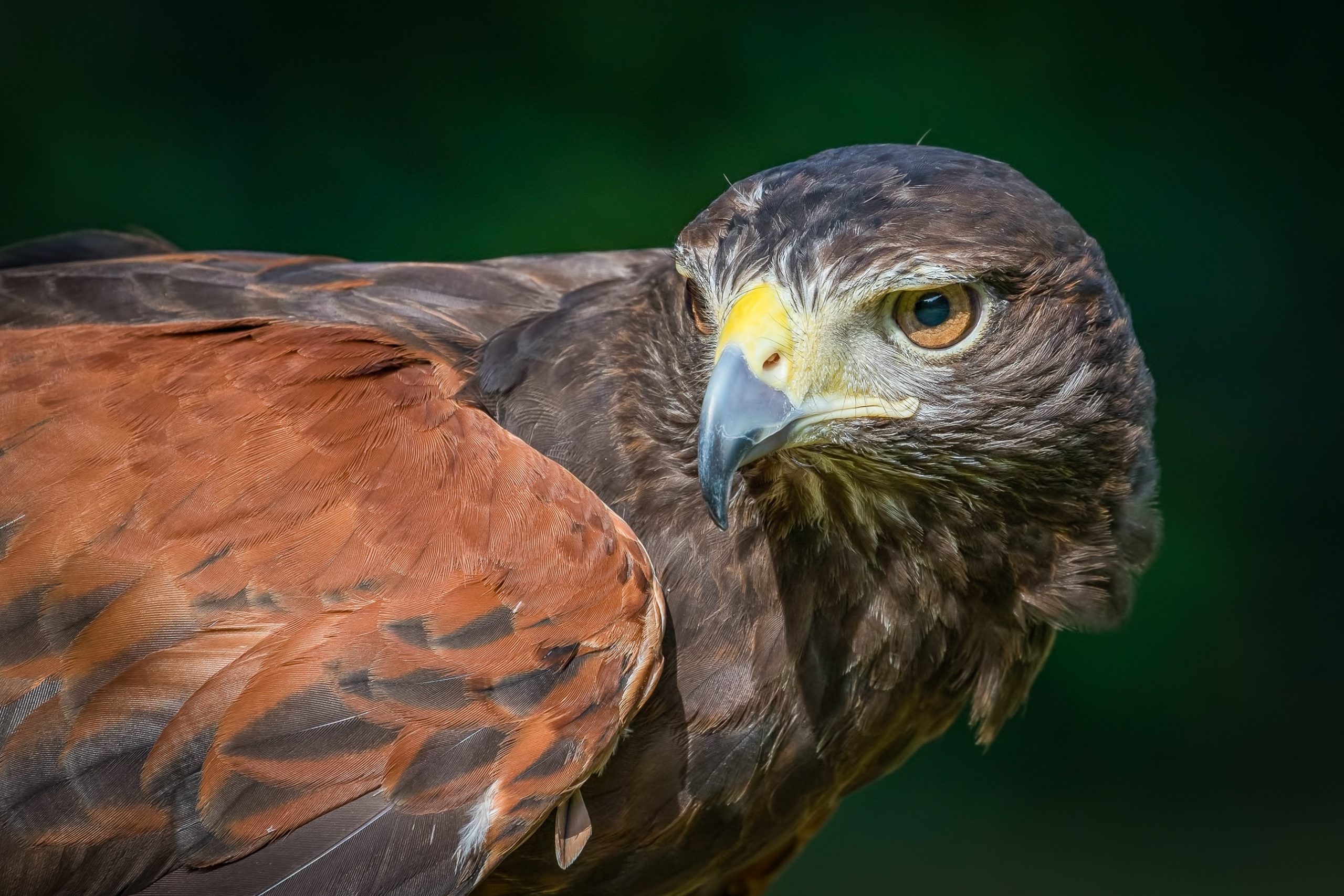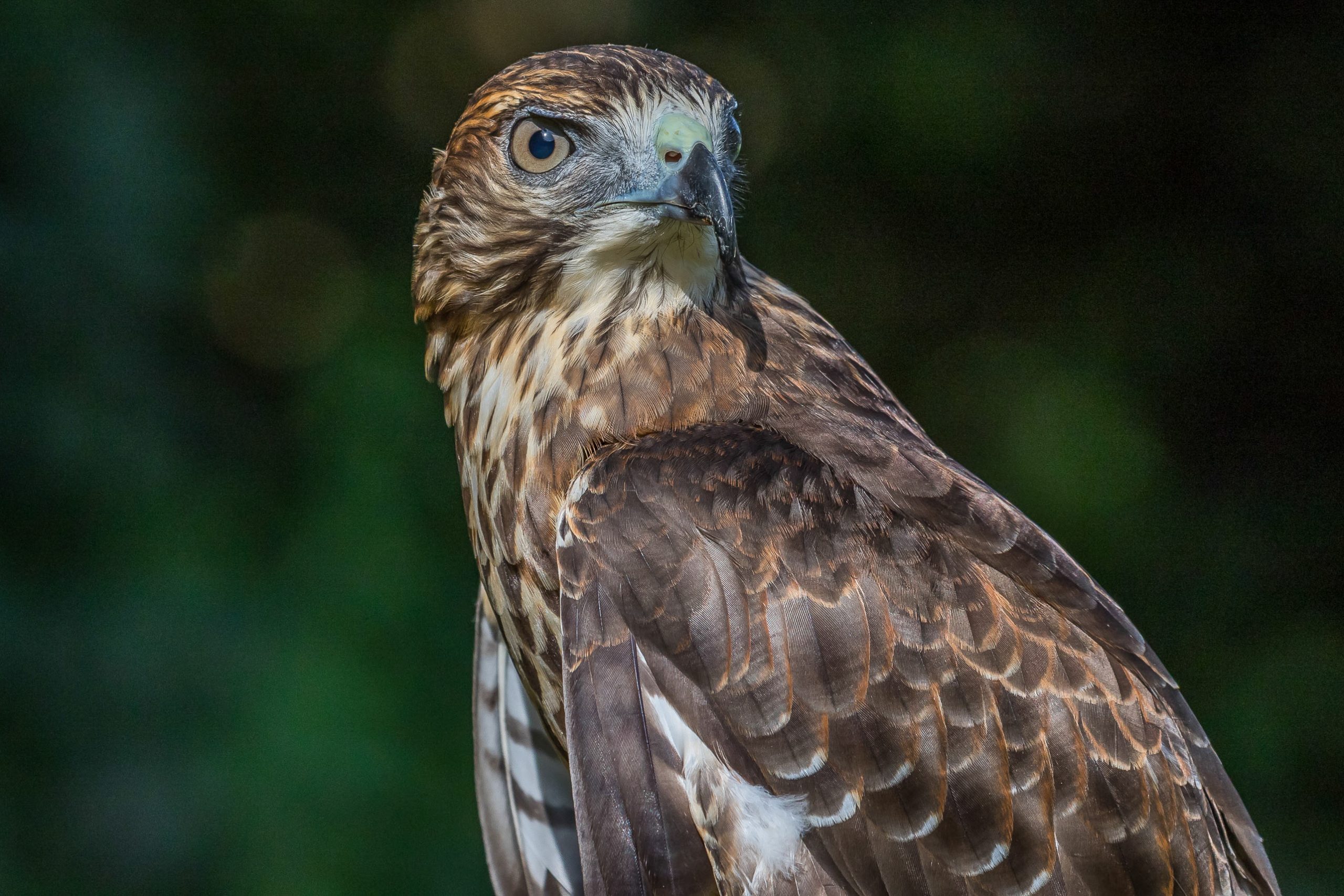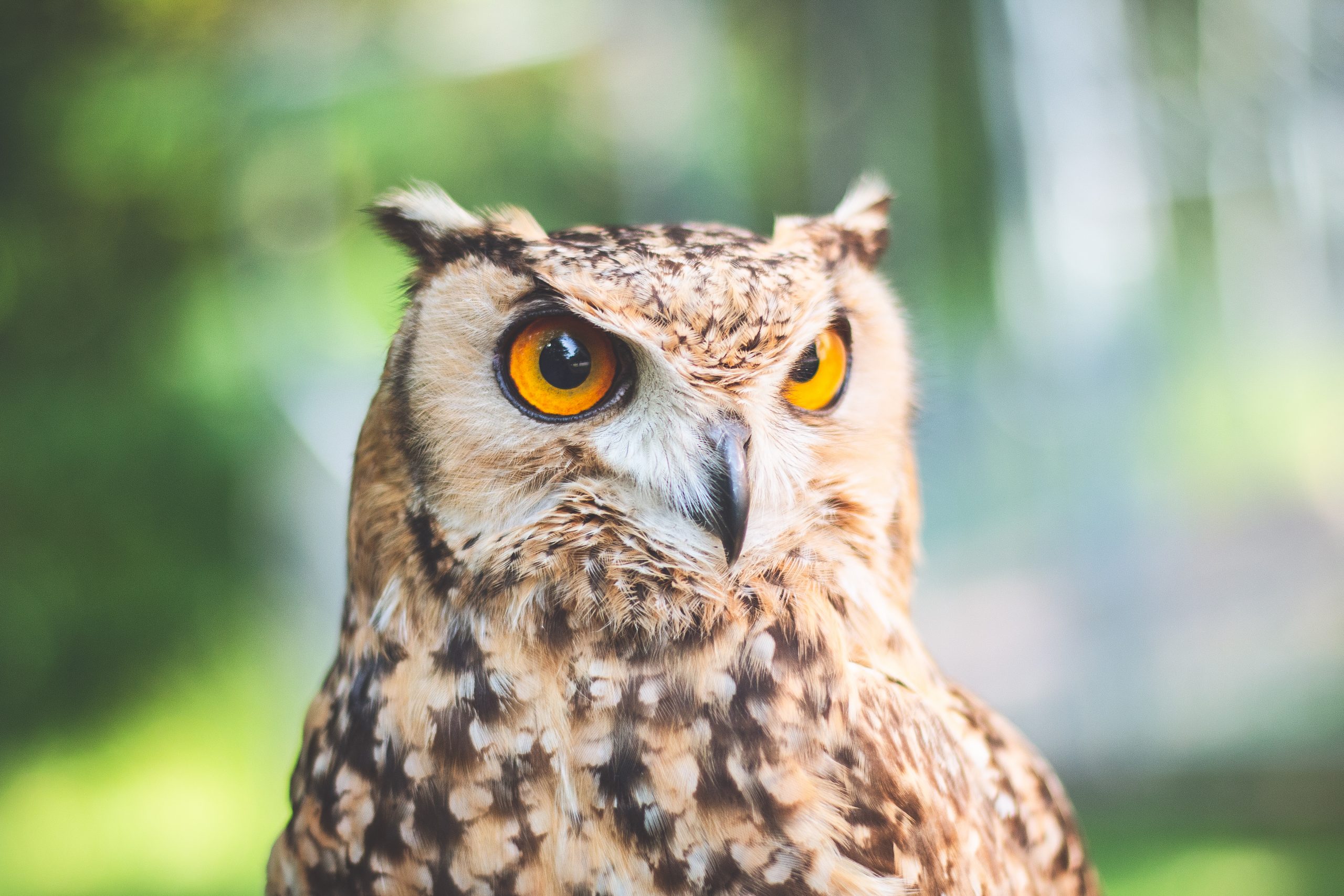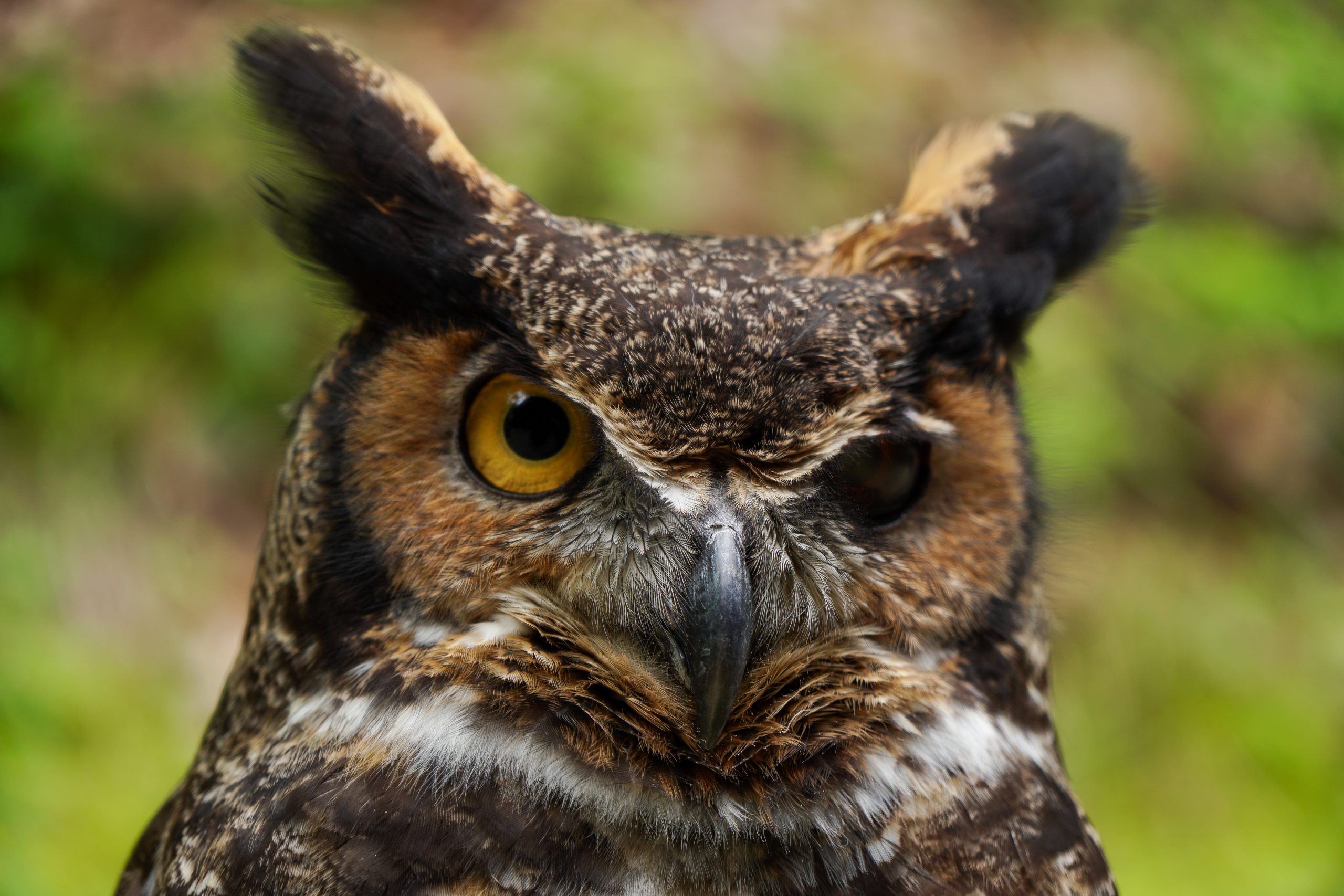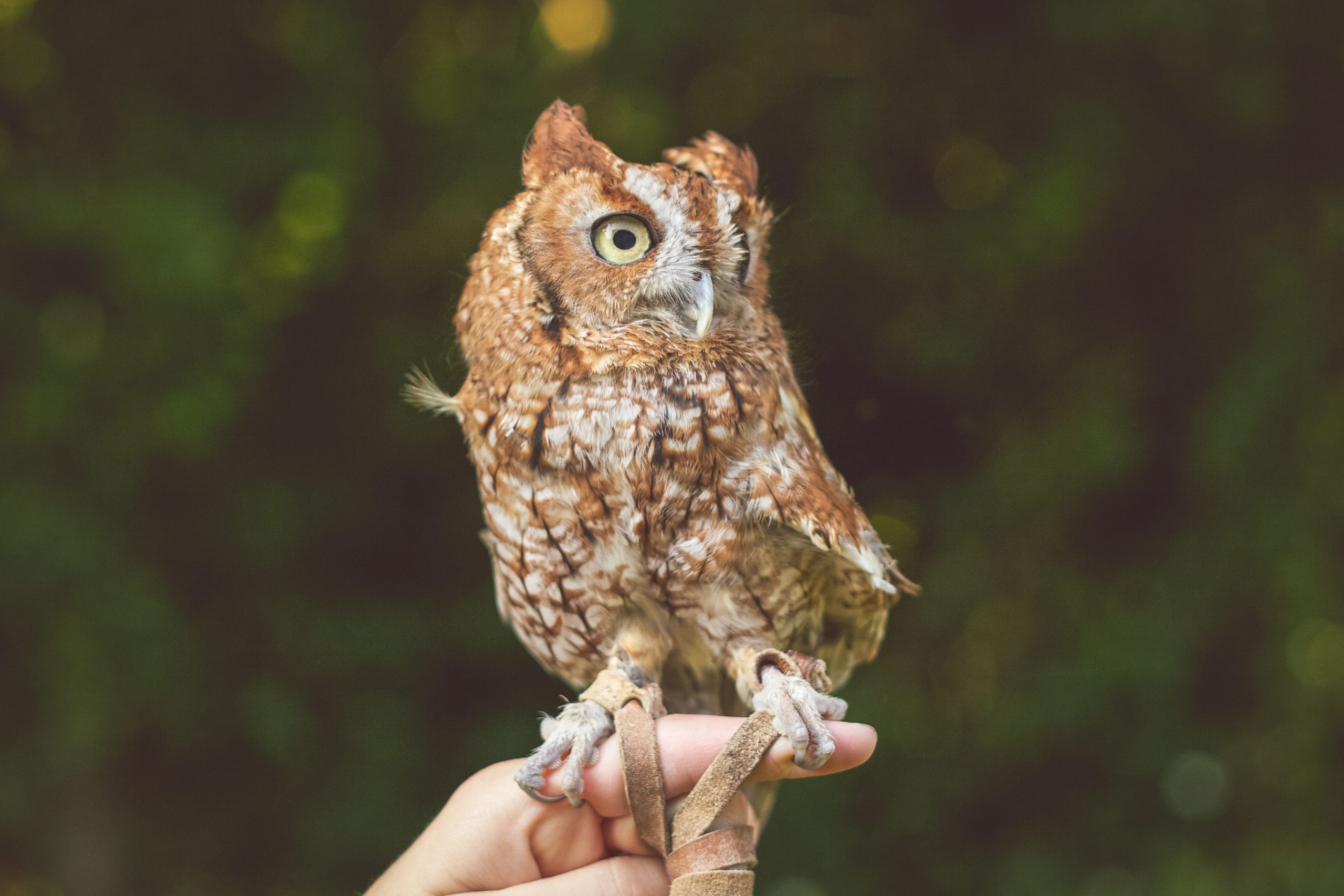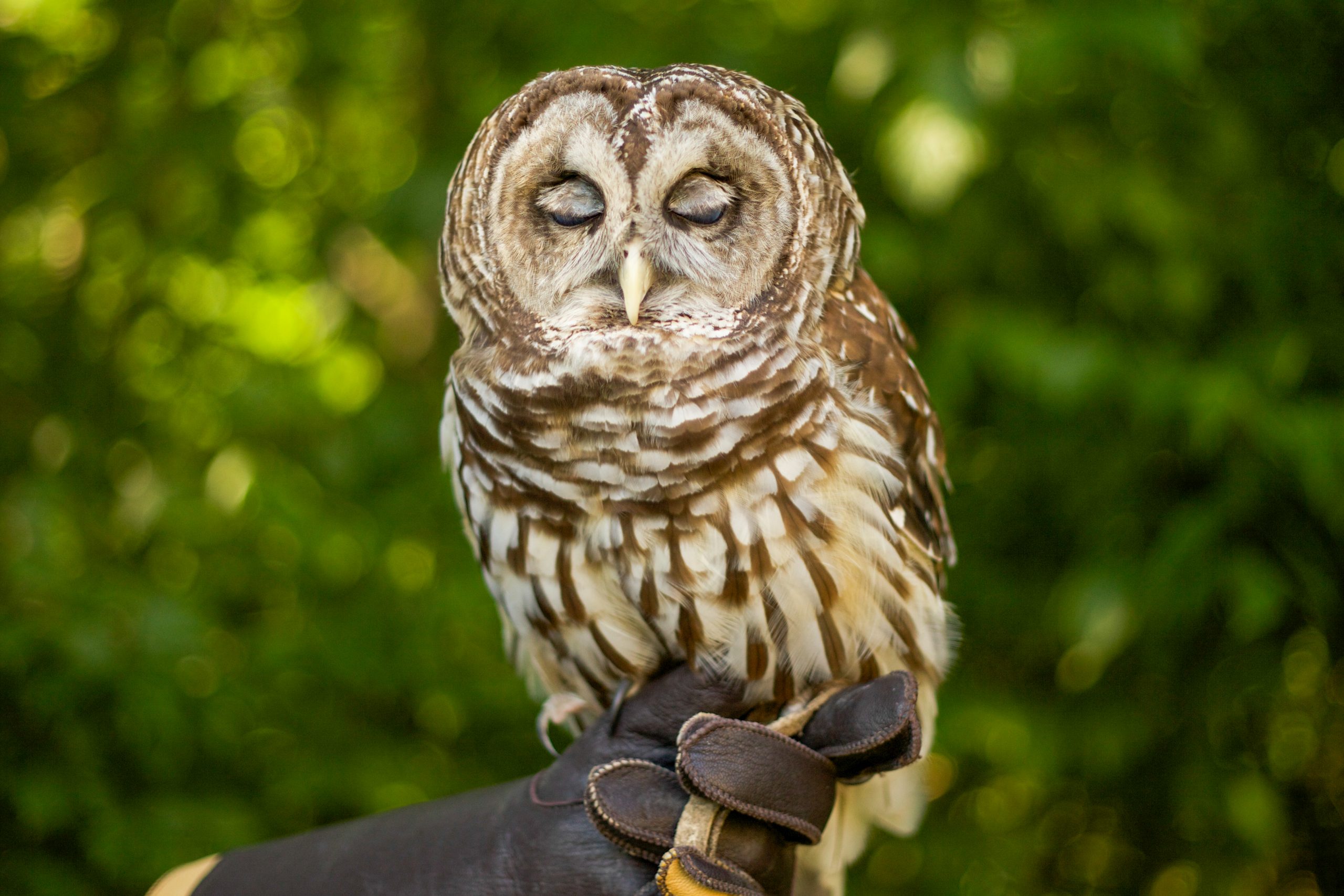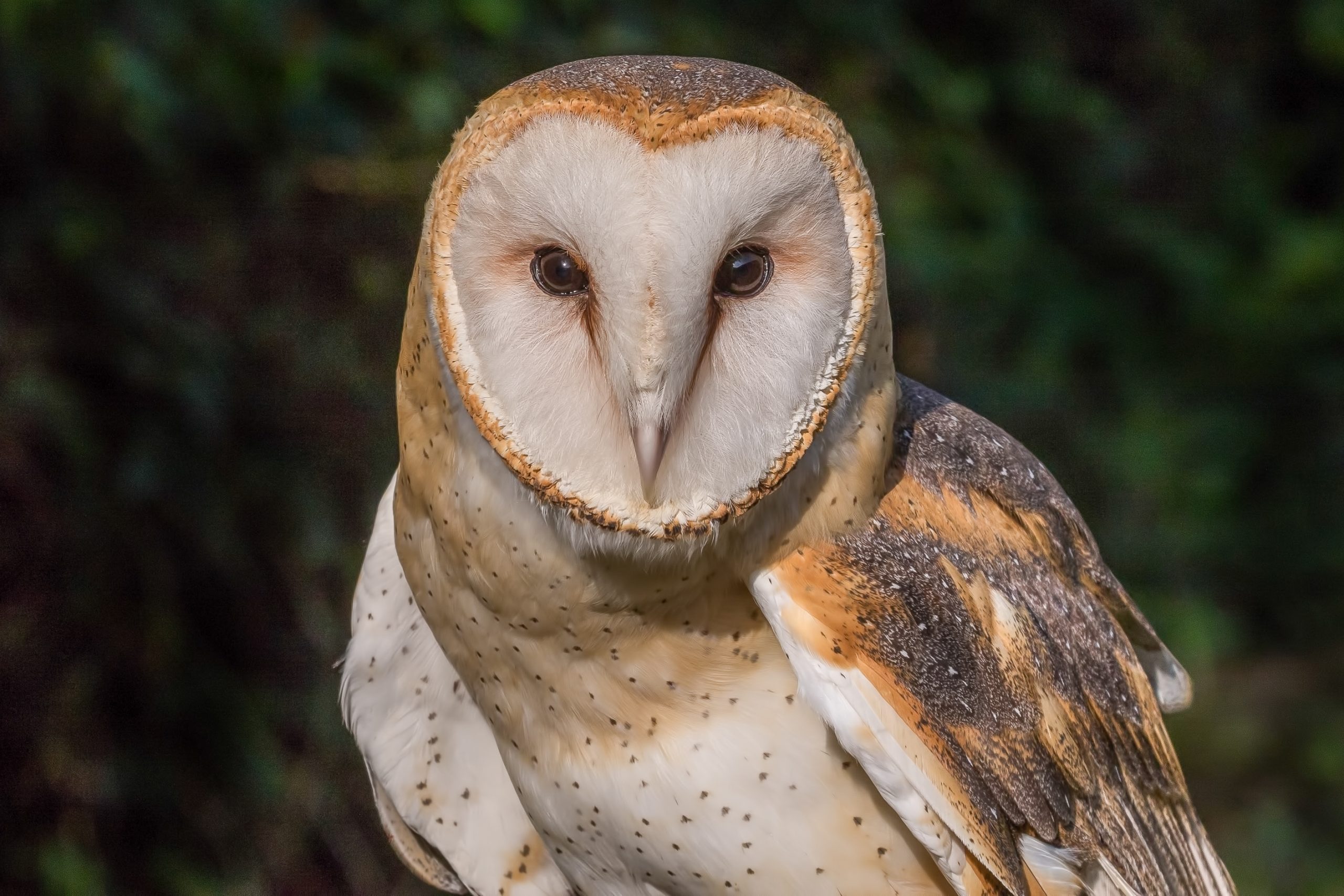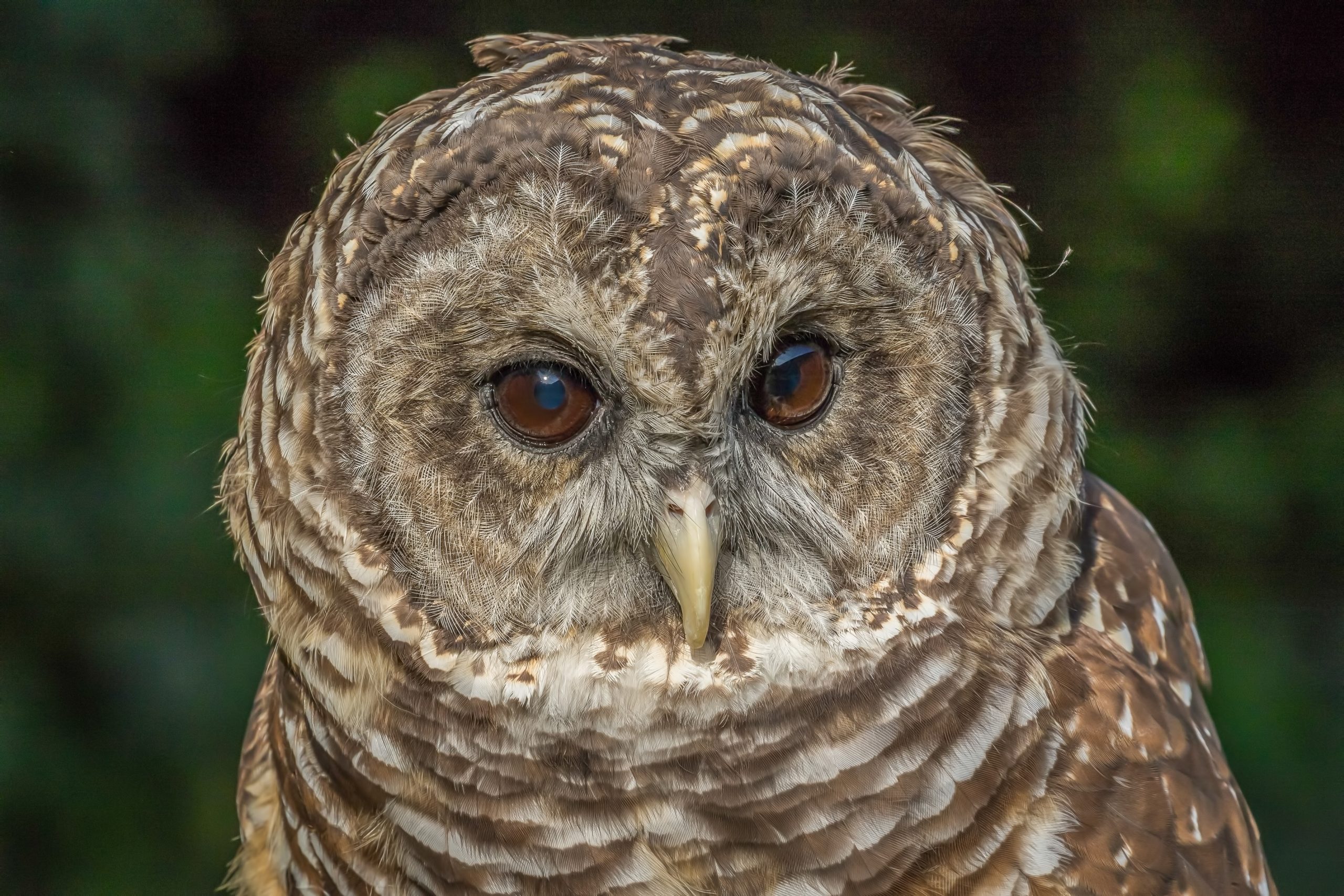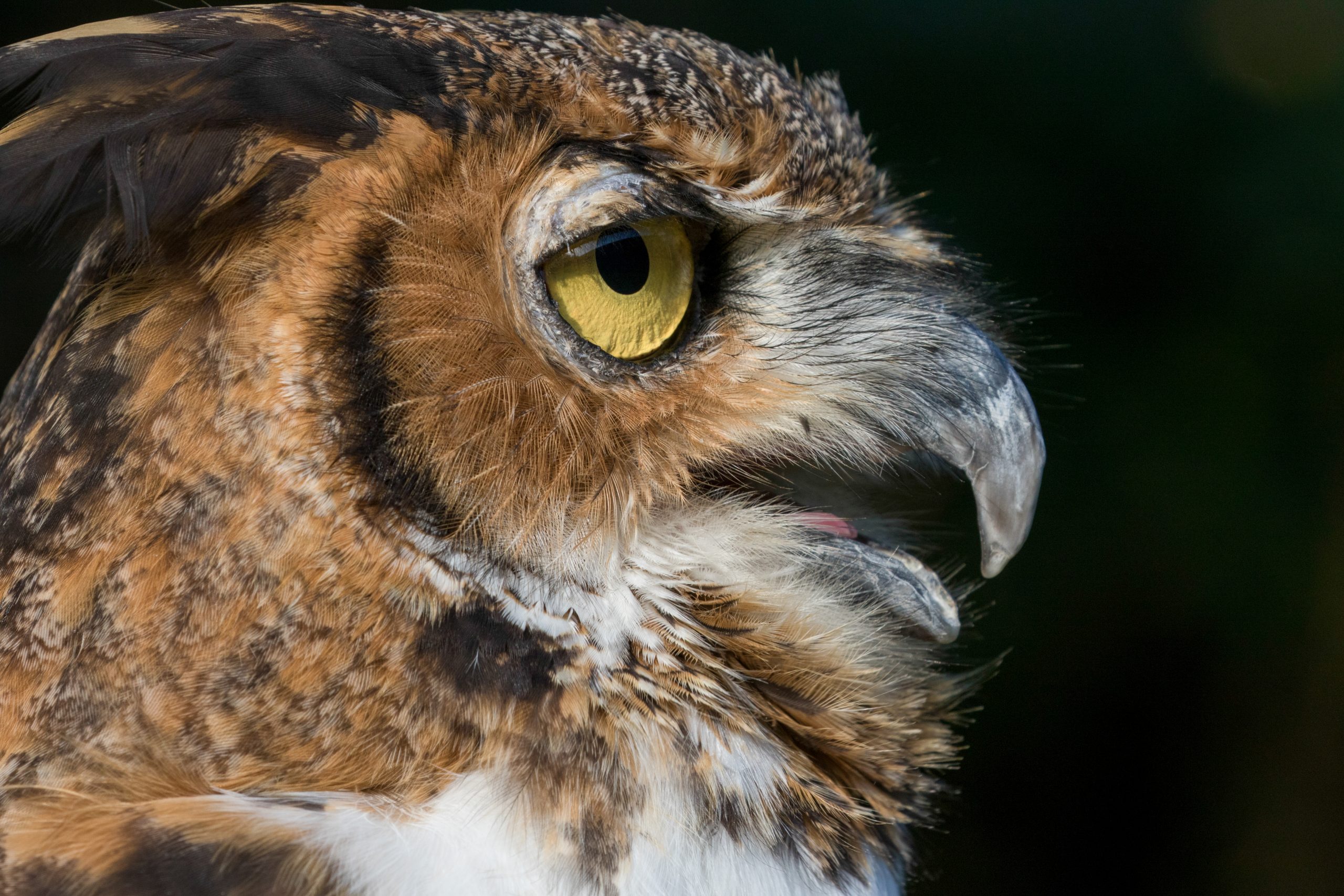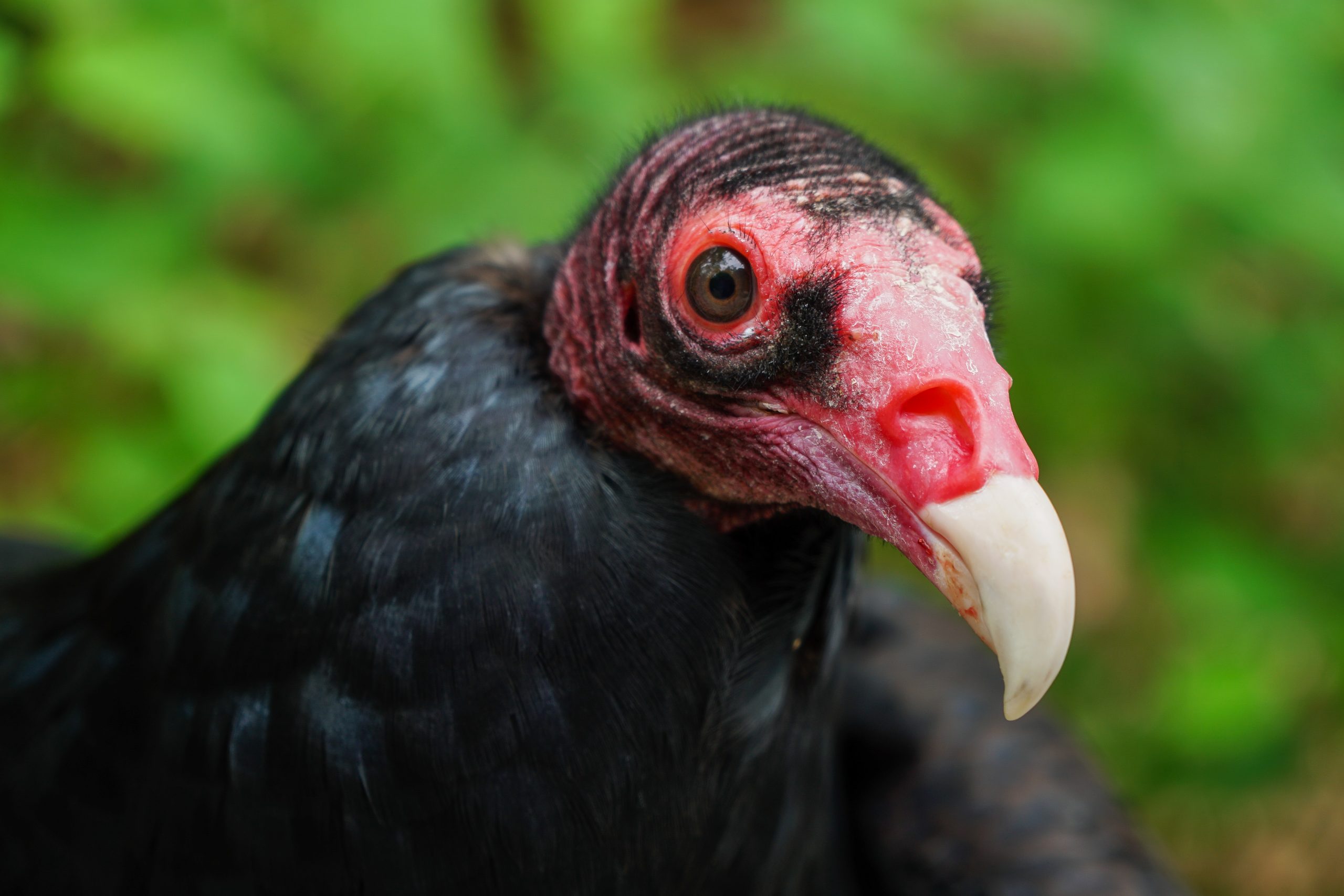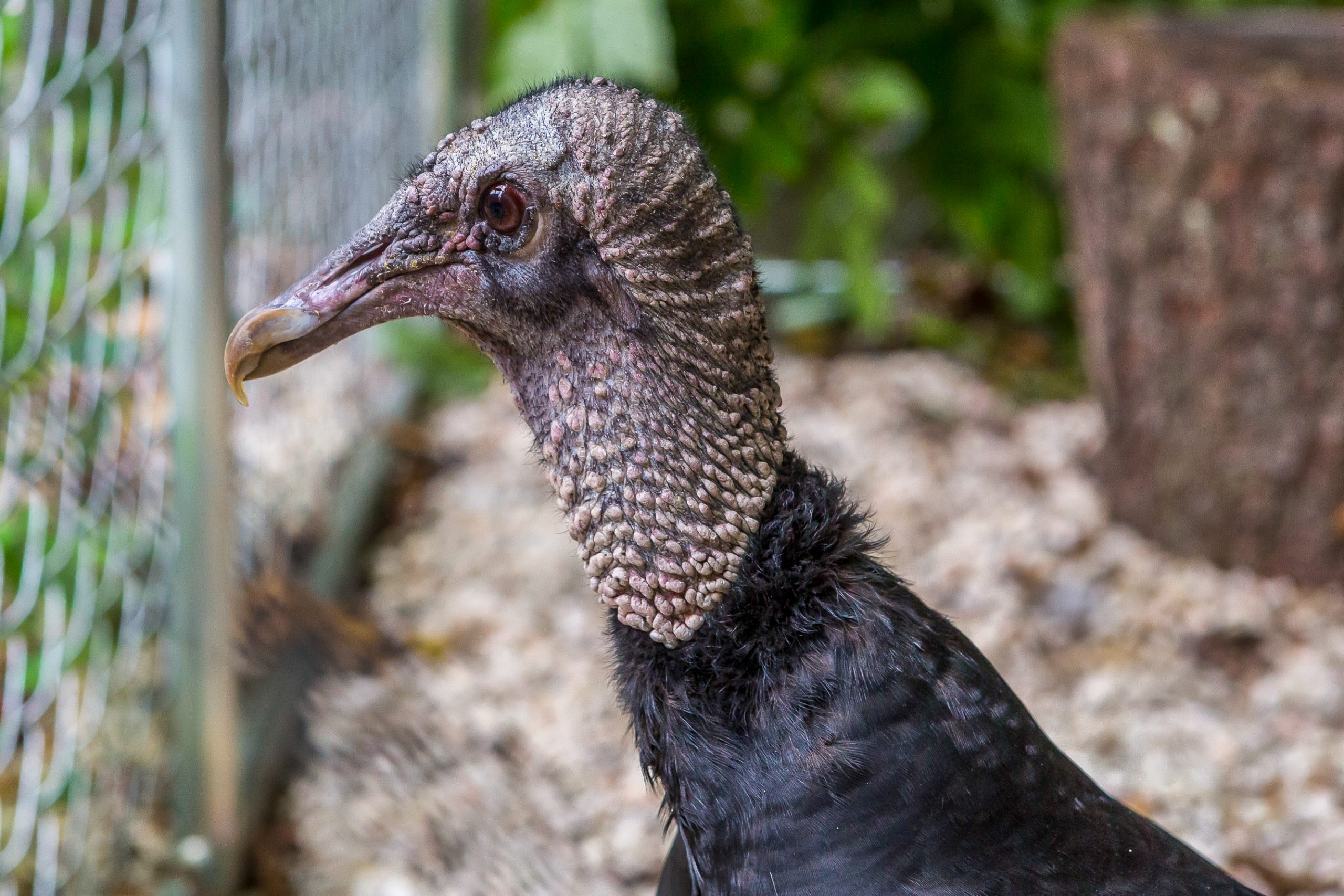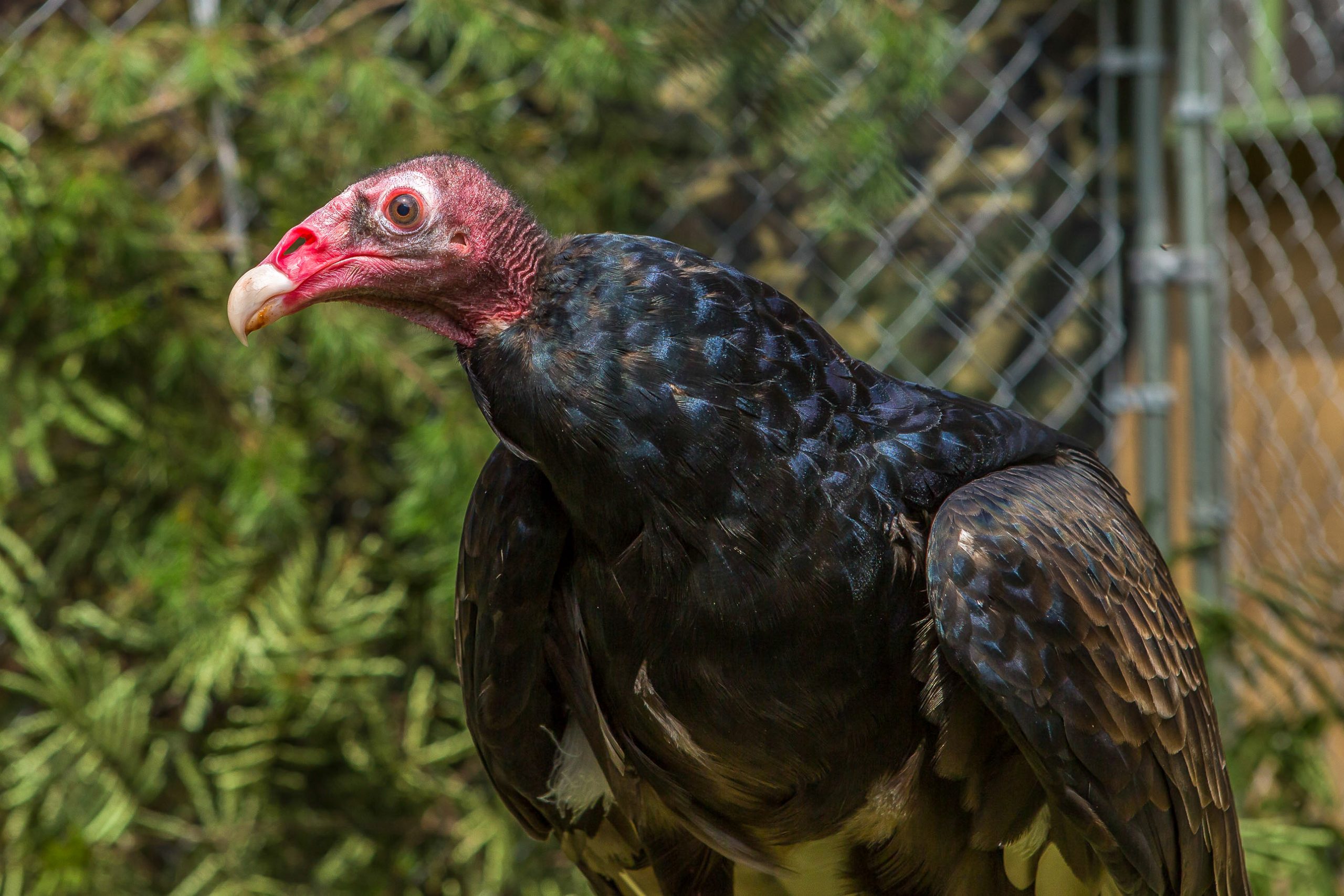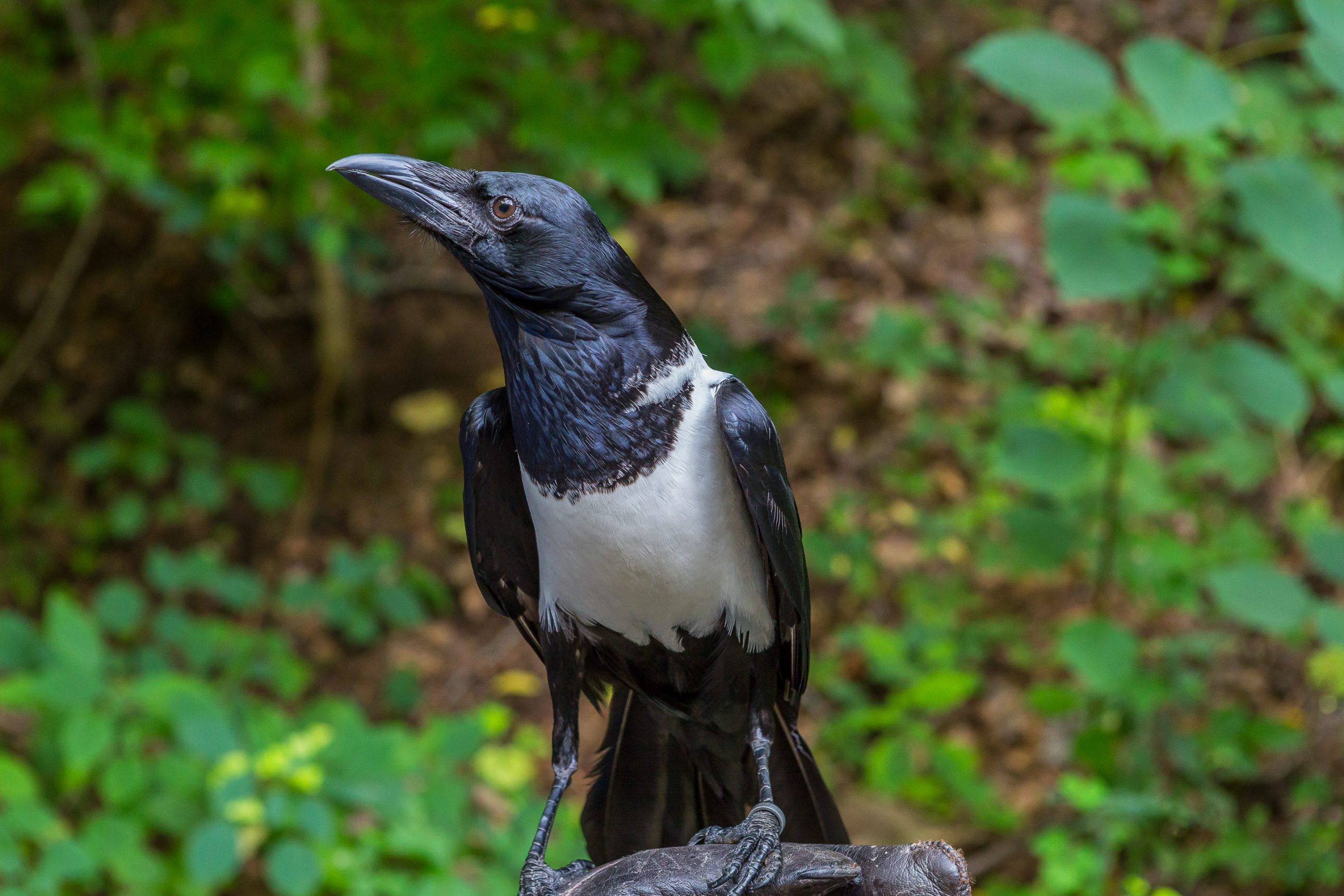American Eagle Foundation Birds
The American Eagle Foundation takes care of LOTS of different birds! Select a category below to learn more!
Bald Eagles
Bald Eagles were placed at the center of the Great Seal of the United States in 1782! Since then, they have served as the pride of America’s skies and the symbol of all that America stands for. Bald Eagles obviously aren’t bald! “Bald” in this sense refers to an old English word that means “white headed.” When eagles fledge the nest at between 10 and 13 weeks of age, they are primarily all brown. An Eagle gets its full white head and tail feathers and yellow beak and eyes at around four to five years of age. Bald Eagles typically mate for life. Usually, they will only look for a new mate if their faithful companion dies, but sometimes a new mate is chosen in a territorial fight over a nest.
Golden Eagles
The Golden Eagle gets its name from the beautiful golden colored feathers found on the back of its head and neck. They are the most common type of eagle found on every continent in the northern hemisphere. A strong and powerful flyer, they delight in soaring through gale force winds and have been known to climb thermal updrafts up to four miles high.
Falcons
Falcons are small to medium-sized, diurnal—or day-time hunting—birds of prey in the genus Falco, and they come in a wide variety of shapes, colors, and sizes! North American falcons can weigh anywhere from 2.8 ounces to 4.5 lbs. There are about 40 species of falcon worldwide and 7 in North America and about 3 species of falcon found in Tennessee. Falcons are especially skilled hunters that have hooked beaks and talons, or sharp claws, with which they catch and eat their prey. They aren’t picky eaters and will eat prey like mammals (including rodents), other birds, insects, amphibians, and reptiles.
Hawks
The American Eagle Foundation takes care of a number of different species of Hawks, such as red-tailed hawks, red-shouldered hawks, and Harris’s hawks.
Owls
The American Eagle Foundation takes care of a number of different species of owl. Owls can turn their heads almost all the way around (270 degrees). The reason they do this is because their eyes, unlike the eyes of humans, are locked in their sockets and are pointed straight ahead. They are capable of turning their heads so far because they have 14 vertebrae in their neck, double the amount that humans have.
Vultures
A vulture is a scavenging bird of prey. The New World vultures include the California condor and the Andean condor; the Old World vultures include the birds that are seen scavenging on carcasses of dead animals on African plains. Some traditional Old World vultures (including the bearded vulture) are not closely related to the others, which is why the vultures are to be subdivided into three taxa rather than two. New World vultures are found in North and South America; Old World vultures are native to Europe, Africa, and Asia, meaning that between the two groups, vultures are found on every continent except Australia and Antarctica (though Trigonoceps vultures have crossed the Wallace line).
Corvids
Crows are part of the Corvid family, which is thought to be one of the most intelligent group of birds. These birds are very receptive and easily trained.


